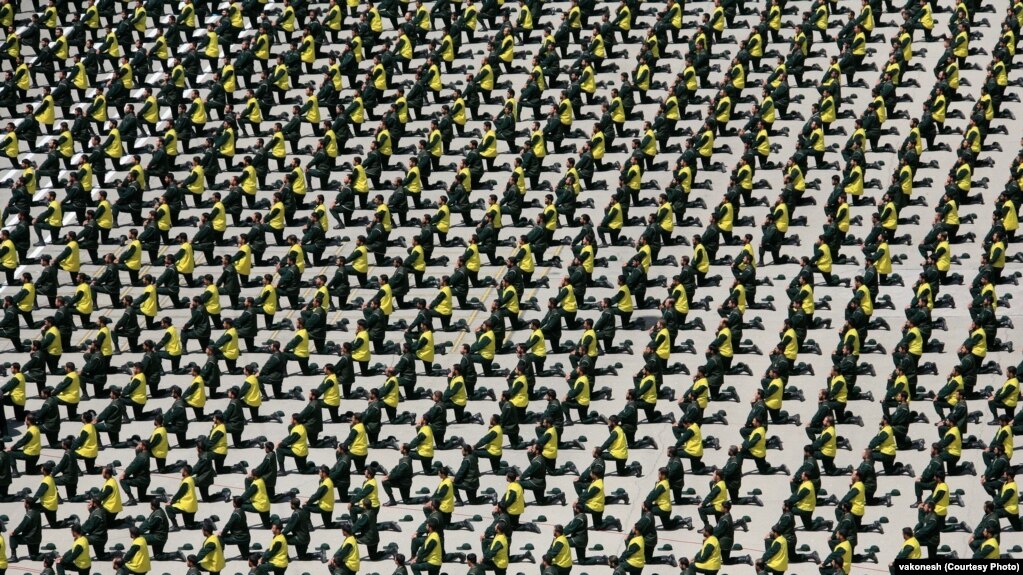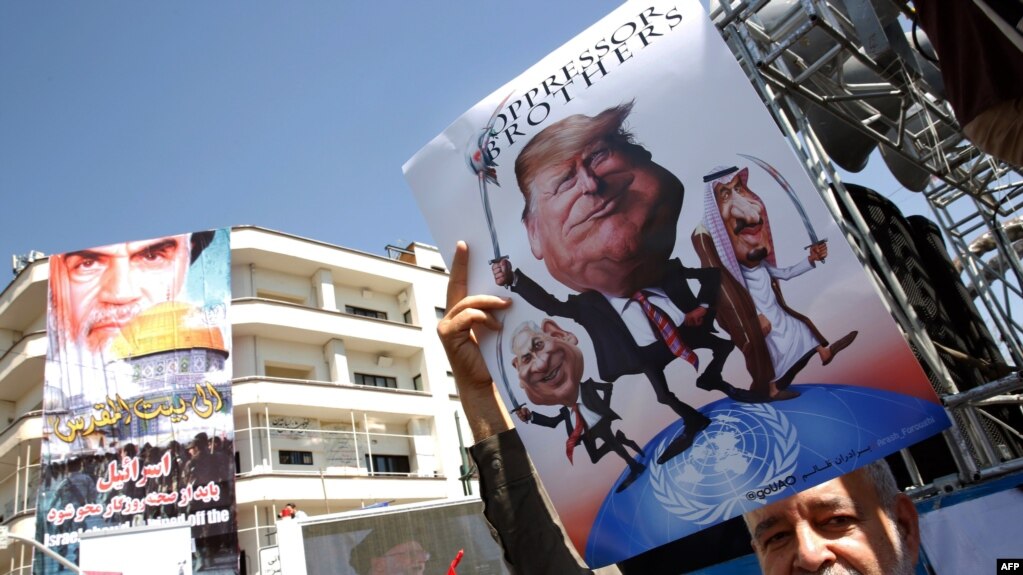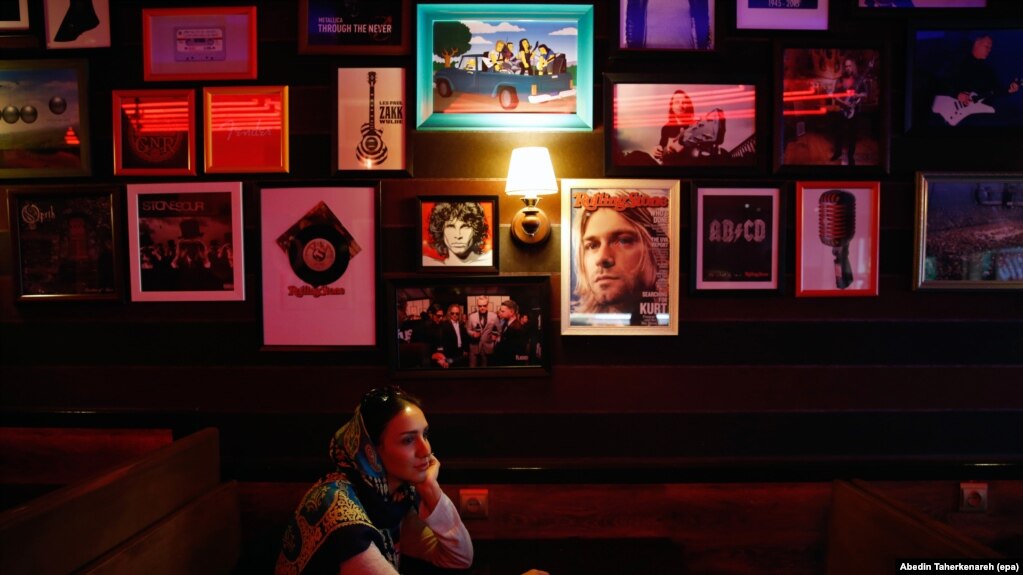RFL/RE – The recent protests in Iran may be a harbinger of more dramatic upheaval in the Islamic Republic’s future. Less certain is what shape the political landscape will take, with much of the country’s future depending on the actions of foreign powers.
Harvard political scientist and scholar of revolution, Theda Skocpol, has argued that three preconditions must exist in a country before a revolution is successful: major confrontation with foreign powers, popular discontent with the rulers, and serious intra-elite disagreements on how to resolve the crisis.
The protests that began on December 28 and lasted about 10 days are the latest major protests since the fundamentalists consolidated power by June 1981. Major protests also occurred in 1981, 1999, 2003, and 2009, and were only put down with major repression. It appears, however, that the current confrontation is reaching a boiling point.
The policies of the Islamic Republic have created vast swaths of the population who are strongly opposed to the economic, political, cultural, and foreign policies of the regime.
The policies of the Islamic Republic have created vast swaths of the population who are strongly opposed to the economic, political, cultural, and foreign policies of the regime. This is evidenced by what the International Monetary Fund has called the largest “brain drain” in the world, with about 150,000 to 180,000 leaving the country annually, indicating large numbers of educated Iranians do not wish to live under the rules of the Islamic Republic.
For those who stay in Iran, the poor economy has created a large pool of young men and women in small towns and cities who see few opportunities for employment and a better life. The dismal economic situation has been pushing many from the lower middle class into the ranks of the desperately poor.
The regime’s foreign policy of spending billions of dollars for its wars in Iraq, Syria, Yemen, Lebanon and elsewhere cost money that could be spent on public welfare and economic investments at home. The GDP per capita in Iran is $5,219, lower than in neighboring countries with comparable economies like Lebanon’s $8, 257 or Turkey’s $10,862.
On the side of the regime are three major strata. First, a grotesquely wealthy nouveau riche class has emerged in Iran. Through utilizing extra legal means and political connections, the top officials get the coveted monopolistic licenses to import various products and circumvent custom duties and the like. Paul Klebnikov of Forbes magazine has called them “millionaire mullahs.” Elaine Sciliano of the New York Times has referred to them as the “Mafia families.” Waldmann of the Wall Street Journal called the system “clergy capitalism.” These individuals are often closely related to the upper echelons of the regime by blood or marriage have accumulated fantastic wealth through their political connections and corruption.
Paul Klebnikov of Forbes magazine has called them “millionaire mullahs.” Elaine Sciliano of the New York Times has referred to them as the “Mafia families.” Waldmann of the Wall Street Journal called the system “clergy capitalism.”
Second, are those who hold power in the vast coercive apparatuses in the country. They include the Islamic Revolutionary Guards Corps (IRGC), Basij, various intelligence and security entities of the Office of the Supreme Leader, the prison system, and the judicial branch. The regime provides the members and their families with secure employment, power, status, and extensive fringe benefits (health care, housing, special stores, foreign travel, set asides for university entrance). The regime has created a class that is guaranteed financial benefits in exchange for loyalty to the regime and repression of dissidents. Most members of this stratum have a high school degree or less.
Third, the regime has created a far-reaching business network under the direct control of the fundamentalist clerics that control much of Iran’s economy. In addition to these fundamentalist businesses, the state apparatus itself owns large economic entities. The IRGC alone has business interests estimated to account for about one-third of the GDP. These businesses hire those who prove loyalty to the regime.
The ruling fundamentalist oligarchy is composed of three major factions: hardline, expedient, and reformist. All three factions are fervent followers of Ayatollah Ruhollah Khomeini, the founder of the Islamic Republic and supporters of ultimate rule by a Supreme Leader.
Each faction argues that its policy proposals would best preserve and prolong the rule of the oligarchy. There exists little consensus among the ruling fundamentalist elites on economic, political, cultural, or foreign policies. The 2009 protests were efforts by the reformist and expedient factions to pressure Khamenei to declare the reformist candidate Mir-Hussein Moussavi as the winner of the presidential race.
Many observers, including myself, believe that the supporters of the regime comprise about 10 to 20 percent of the population
As the crisis of legitimacy has become more acute, the intra-elite struggles have become more cantankerous and incendiary. However, when the survival of the regime is at stake, all three fundamentalist factions close ranks to preserve their rule.
For example, all three factions have condemned the most recent protests and have supported its suppression.
There is no reliable way to measure the support or opposition to the regime. There are no free and democratic elections in Iran. Opinion surveys are also not credible in a country that is highly repressive and dictatorial. Many observers, including myself, believe that the supporters of the regime comprise about 10 to 20 percent of the population. Based on these observations, I see five possible outcomes of the protests: (1) war with the U.S.; (2) successful crushing of the uprising; (3) stalemate and Syria model of civil war; (4) successful revolution; and (5) coup by the IRGC.
War With the U.S.
Ayatollah Khamenei, in an official speech delivered on January 9, said that the protests in Iran were planned by the United States and the Zionists. Khamenei said that he will retaliate against the U.S. for the harms President Trump has inflicted on Iran by organizing these protests.
Khamenei wishes to avoid a direct full-scale war with the U.S. and prefers to use clandestine terrorist attacks by his own forces as well as attacks by proxies.
Are Khamenei’s words mere rhetoric for domestic consumption or should the U.S. take his threat seriously? Foreign policy decision-making in Iran, Khamenei’s foreign policy orientation, and his past behavior strongly suggest that we should take his threat seriously.
In Iran, the decision to go to war or engage in major military action is the sole power and prerogative of the Supreme Leader. Khamenei wishes to avoid a direct full-scale war with the U.S. and prefers to use clandestine terrorist attacks by his own forces as well as attacks by proxies. For example, when President George W. Bush declared the Islamic Republic of Iran as part of the axis of evil, Khamenei responded first by similar words and then followed by providing massive funds, weapons, and trainingto his proxies in Iraq so that they would kill American troops.
If history is a guide, we should expect a series of small attacks on American interests around the world as well as inside the United States.
Crushing the Uprising
Although the ruling fundamentalist factions are terribly divided, they nevertheless will unify against the pro-democracy protests.
Iran possesses vast oil and natural gas reserves, which provide the regime with huge revenues. Iran possesses the fourth largest known crude oil reserves and the second largest natural gas reserves in the world. The oil and gas sectors employ less than one percent of the economically active population and the income goes directly to the hands of the government. Therefore, those countries and companies that purchase oil and gas from the regime provide the fundamentalist rulers the resources that enable them to dominate and oppress the Iranian people.
Although the ruling fundamentalist factions are terribly divided, they nevertheless will unify against the pro-democracy protests. The 10 to 20 percent support is sufficient for the regime to successfully suppress the opposition as long as the three fundamentalist factions keep their unity.
One of the main factors that might undermine intra-elite unity is serious pressure from the U.S. such as credible threat of war. If there is no major pressure from the U.S. and EU, the successful suppression of the protests is the most likely outcome.
Stalemate and Syria Model of Civil War
Certain opposition groups in Iran have a strong social base of support and can organize large numbers of their constituents and wage armed struggles. For example, the Democratic Party of Iranian Kurdistan has strong organizational structure, large social base among the Sunni Kurds, and is willing and able to carry out armed struggle against the regime if it receives support from other countries (e.g., U.S., Saudi Arabia, and Israel).
The same is true for the Democratic Party of Kurdistan, the leftist Kurdish party Komele, the PMOI, Sunni Baloch groups, and small Arab nationalist groups in Khuzestan province. There is also latent opposition among the Azeris that might grow to full-blown opposition under certain conditions.
Three major phenomena became clear during the current protests.
First, these protests were occurring among Iranians from small towns and cities that are mostly Persian, Gilak, Azerbaijani, and Shia Kurds.
Second, the protesters were young, lower middle class, and working class.
Third, unlike the protesters in 1999, 2003, and 2009, the protesters in 2018 showed a proclivity to use violence. They burned Basij and government buildings and smashed bank windows.
These phenomena show that there exists a fertile ground for mass armed movement if other countries would be willing to provide funds and arms to the opposition groups. If the support is massive, the opposition groups may succeed in overthrowing the fundamentalist regime. But if the support is modest, then a long civil war like that in Syria is very likely.
Successful Revolution
A boycott of the purchase of Iran’s oil would cause serious economic difficulties including a high likelihood of the collapse of the economy.
Iran has all the main ingredients for transition to democracy, including a large educated modern middle class, appropriate GDP per capita, and a history of constitutional (1905-1909 and 1911-1921) and democratic rule (1951-1953 during the government of the Iran National Front and Prime Minister Mohammad Mossadegh).
A boycott of the purchase of Iran’s oil would cause serious economic difficulties including a high likelihood of the collapse of the economy. During 2011-2014, when there were only partial sanctions on Iran’s oil and the regime was exporting about 1 million barrels a day, the pressure was so intense that it forced the regime to agree to partially rollback its nuclear program. Economic collapse would decisively change the balance of power against the regime and in favor of the opposition.
The provision of free high-speed Internet to Iran would prevent the regime from blocking the Internet during protests. In combination with a comprehensive effort to counter the regime’s propaganda online, increased access to the Internet could change the balance of power in favor of the people.
Coup by the IRGC
Today the IRGC is the most powerful entity after the Supreme Leader. Khamenei has control over the IRGC. Khamenei was born in 1939 and is 79 years old today. It is not clear that after his death, there would be another cleric that would have such control over the IRGC.
If Khamenei were to die amid national turmoil, there is a very high likelihood of a coup by the IRGC. Many top IRGC leaders are politically ambitious and have threatened to take control in the past in the event of national upheaval.
Conclusion
The fundamentalist regime ruling Iran poses serious threats to peace and security of the Middle East and the world. It also brutally oppresses the Iranian people. The recent protests clearly show that many Iranians are deeply dissatisfied with the regime.
The policy of foreign powers on Iran will influence the direction this popular dissatisfaction will take. President Trump’s actions will influence the likelihood of war with the U.S. If Europeans and other major countries continue to purchase oil from Iran, the regime will succeed in crushing the opposition. If regional powers provide modest assistance to the armed opposition groups, a prolonged civil war will likely result. It is also probably the regime will retaliate against foreign powers that assist armed opposition groups.
A coup by the IRGC is likely only after Khamenei’s death, and it would meet with fierce resistance. If history is a guide, an IRGC regime would be even more aggressive and bellicose than the current Islamic Republic toward the U.S. and the region.
If Europe, Japan, and South Korea were to join the U.S. in imposing serious sanctions on the current regime, they would weaken the regime and would empower and enable the Iranian people themselves to overthrow the regime and establish a political system that they like.
 Shabtabnews In this dark night, I have lost my way – Arise from a corner, oh you the star of guidance.
Shabtabnews In this dark night, I have lost my way – Arise from a corner, oh you the star of guidance.





